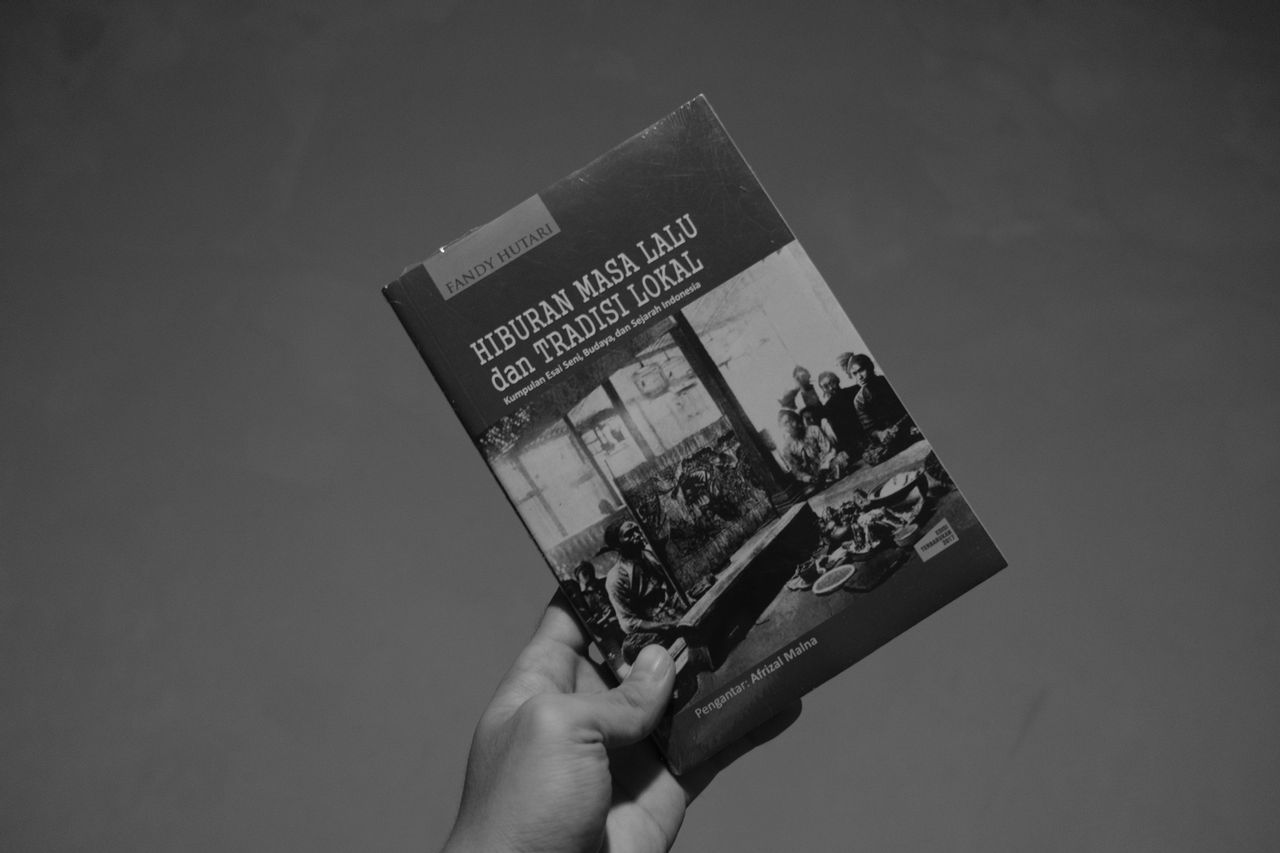Review Of Past Entertainment Books And Local Traditions - Recognizing National Culture

JAKARTA - Indonesia is known as a country that has many uniqueness, starting from history, traditions and culture. In fact, each region from Sabang to Merauke has its own uniqueness. However, over time, art and culture began to be forgotten.
Surprisingly, when Indonesian culture began to be recognized by other countries, protests also emerged from the archipelago.
In order to arouse the love of Indonesian culture, Fandy Hutari packaged it through the book Entertainment of the Past and Local Traditions (2011).
Through 25 articles which he divided into five acts, Fandy wanted his readers to know the beginnings of the development of theater, film, pioneers of culture, culture and local traditions.
The mission is clear, Fandy wants everyone who reads this book to get a treasure trove of history, art and culture that has been popular for a long time in Indonesia and protect it.
After reading this 246-page book, we randomly assigned interesting arts and cultures, including mutual aid, Cekeruhan dance, kebaya and ondel-ondel Betawi.
Mutual LambThis art originated from the life of the people of Kiara Beres, Sumedang, West Java, who mostly have livelihoods as farmers and sheep breeders. On that basis, one of the youths had the idea to make an art that was staged on 2001 Indonesian Independence Day, namely making a sheep statue.
The sheep statue was proposed because the sheep were part of the Kiara Beres residents for many years. Unfortunately, during the Agustusan program, the sheep statue was damaged by the art of the lumbing horse jumping towards the statue.
"For that, they thought what if the sheep statue was carried away, not pulled again. Its fur is replaced with Australian lamb fur," wrote on page 70.
In the phase of perfecting the art of mutual cooperation, several residents created distinctive music and dances that accompanied it. The music is called kawihan, which consists of dogs, drums, gongs and cymbals. Additional musical instrument in the form of a trumpet, accompanied by a sinden. Not only that, artistic performances that usually just wait for Agustusan are now also used in children's circumcision events.
Cikeruhan danceDances that are thought to originate from Cikeruh Village, Jatinangor, Sumedang are rarely performed in their own place of origin. Artists who are skilled at playing the music to accompany Cikeruhan are increasingly rare.
If traced, this dance is a very old social dance. The embryo was born from the traditional rice harvest ritual as a form of gratitude to Dewi Sri Pohaci (the goddess of fertility) around the 18th century.
“At that time, people were walking carrying rice from the fields to the barn while dancing and sounding the tools they were carrying. Then, a Dutch official working on the plantation stopped them in their tracks. The Dutch then danced with them, ”writes page 76.
Furthermore, Dutch officials who worked in the rubber plantation complex around Jatinangor, often invited musicians, song singers who were also ronggeng dancers to perform at the venue. It was at this time that the plantations became wetlands for the artists to stage performances.
KebayaFor Indonesians, the matter of clothing is not only a covering of genitals, but also a symbol of socio-economic and even political status. Moreover, in the past, the Company created an image of power through clothing, namely differentiating their clothes from those of the native people. Bumiputra is also prohibited from wearing white clothes.
However, through the kebaya, all social class groups in the 19th century, including Indonesian and Dutch women, all made kebaya a compulsory garment worn in the morning. Therefore, Kebaya became very popular in 1870.
Ondel OndelBetawi art, which was originally called barongan, often invites passers-by to stop watching the swaying of the two dolls. In the past, ondel-ondel was always involved in events aimed at repelling disasters, including the plague. Not surprisingly, ondel-ondel is often referred to as a reinforcement-repelling doll.
In this book, Fandy focuses on the ondel-ondel debate that started singing on the streets of Jakarta. Some people say this step has made the art of ondel-ondel, which is known to always perform at official events, is now starting to descend into caste. However, another viewpoint teaches ondel-ondel to take to the streets because of the essence of the doll, namely rejecting reinforcements.
“Traditional artists don't know commercialization. They are just trying to survive. Commercialization is a capitalist perspective. What is clear in the chaotic Betawi-nuanced soap operas, insulting Betawi, insulting Betawi, is commercialization, ”the writing on page 214.
Detail:
Book Title: Past Entertainment and Local Traditions
Author: Fandy Hutari
First published: April 2011
Publisher: INSISTpress
Number of Pages: 246
